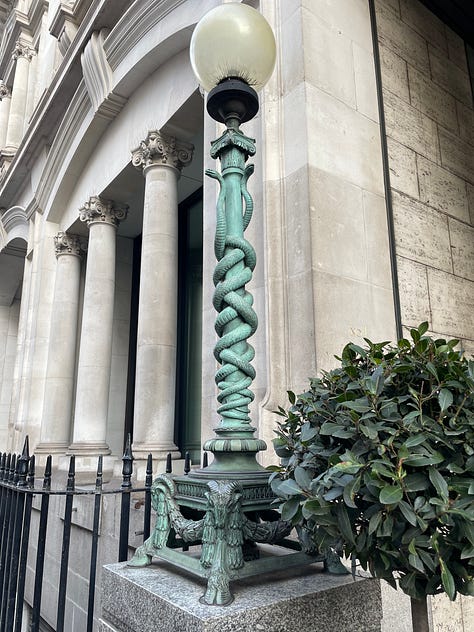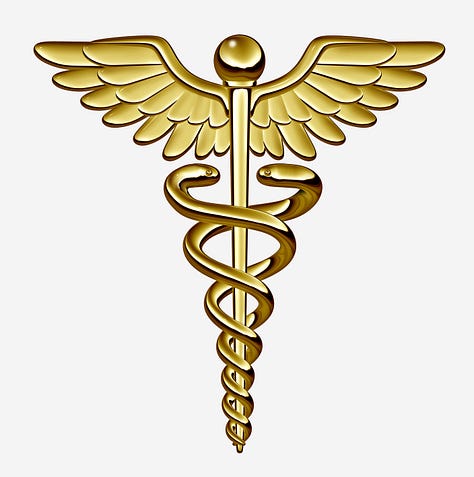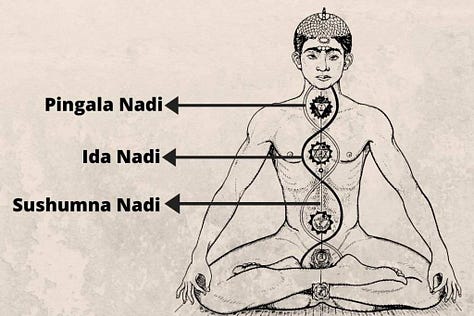Photo from Canva
Practice Yoga with Julia
Monday Meditation on Zoom 8am; and Monday In-Person at Union Church 1:30pm
Book here
Shiva Shakti Studio Classes on Tuesday 7pm; Thursday 10am; Thursday 6pm and Sunday 6:30pm
Book here
Next Holistic Yoga Day Retreat - 29th April 12pm - 5:30pm; Yoga Junction
Book here
Dear Yoga Practitioner,
Post-Essay New Beginnings
First of all, I apologise for my silence on this Substack in the last few weeks… I got so absorbed in writing my yoga therapy essay, that I developed a kind of tunnel vision. Life dwindled to the bare minimum. I didn’t even cook (I love cooking). Instead, I lived on eggs, cheese, nuts, chocolate, salad, apples and copious amounts of gluten-free toast. The good news is, I did do yoga which eased out my aching back and neck and took the edge off the stress somewhat.
So with that behind me, I am tentatively returning to cooking, dancing (last night I was at the Ministry of Sound for a cacao ceremony and ecstatic dance night - so much joy there!) and writing this Substack, which I love doing… I won’t abandon it for that long again. Post-essay feels like returning to a new phase of my life, traversing a new loop in the spiral. Whereas before I had just one group class, now I’m teaching around 3 - 5 group classes, most of them at the Shiva-Shakti Studio in Crouch End. I am very much enjoying the delight of guiding more people into calmer more vibrant states of their being.
How Mental Habits Create Stuck Stress
This week, I’m inviting you to delve into the samskara of pranamayakosha. In other words, the way our physical, mental and emotional energy can get stuck or aggravated by our conscious or unconscious habits of mind. This is a two-part article, maybe three... There is a lot to say about our precious breath, or our prana, the carrier of life force energy, the flow of vitality within and around us.
What is Prana?
Prana is present in varying degrees in all living beings - animal and vegetable; it’s also present in minerals and rock; in air, water, fire, earth and ether (deep space). Prana is the animating life force of the universe, and as such, it is something that we all share. In essence, prana is abundant and freely available to all.
Disrupting Flow
However, there are many ways that we disrupt the flow of prana in our energy systems (the pranamayakosha). These blocks are created by the habits and patterns we carry from our inherited karma (ancestral lineage, societal norms); and from the karma we generate day-to-day (choices and habits we make in the present moment). However, we can modify the effects that our genetics, upbringing and culture have had on our energetic system (pranamayakosha) and physical system (annamayakosha). We can work with what we have, by using our wisdom and discernment (vijnanamayakosha) in the choices we make right now. Each moment of our lives is an opportunity to instigate positive change.
In some ways having a chronic illness is a call to work with prana. I started yoga when I was around sixteen years old, I had spent my childhood plagued with intermittent ill-health and constant anxiety. When I came into contact with yoga (practising on my own with a book) I immediately recognised the shift in my mental and physical health… Nearly four decades later, I’m becoming incrementally healthier as my practice deepens. I am grateful for the difficult start in life as it led me onto an endless path of gently cultivating the prana within me, which brings subtle inner strength, joy and peace.
Prana and Qi
Prana is roughly analogous to Chi or Qi (in traditional Chinese medicine) and the nadi are similar in concept, to the meridians. There are also points along the nadi, called marma points, which are similar to acupuncture points. Acupuncturists, reflexologists, acupressure practitioners, energy healers and Ayurvedic physicians can sense into the energy blocks of chi or prana along the psychic channels and release them.
For everyday attunement and clearing of the nadi we can practice asana and pranayama. If we practice regularly and attend to the other six limbs of yoga, we support a freer flow of prana through the nadi. This is not to say, that by practising yoga we will never become ill. Life is much more complex than that! Environmental toxins, our inherited karma and simple bad luck can mean we experience blockages and imbalance within pranamayakosha, despite our best efforts. However, it is safe to say that a regular, appropriate yoga practice nurtures our energy levels and well-being in a noticeable and reliable manner whether we are working with chronic illness or not. If the imbalances are deeply rooted more practice is required, and often much more subtle practices.
If Its Not Working - Seek Advice!
If you aren’t feeling the positive effects from your yoga practice, then it might be time to seek the advice of a teacher. They will support you in making changes to your practice so it serves your individual needs more appropriately. Ideally, one should always feel calmer, and more revitalised after yoga practice. This balancing effect (feeling more settled, yet alert and energised) is due to the balancing of prana that occurs when you pay mindful attention to your movement and breath.
Clearing the Psychic Channels
Nadi is the Sanskrit name for the energy channels that run through the spine and the whole body. They are akin to the veins, arteries and capillaries of our vascular system. Unlike the vascular system which can be seen, the nadi reside unseen, on a subtle level of existence. Yet, the effects of blockages along these psychic channels are certainly felt in the material plane. We sense these in myriad ways including pain; swelling; inflammation; build up of tissue; dullness; lack of sensation; lethargy; inability to rest; rumination; malaise etc. If we ignore these signs and symptoms, we may go on to develop physical or mental illness.
Breath and Prana
Respiration works at the level of annamayakosha, the physical body. When we inhale the air moves into the lungs where the oxygen passes through the pulmonary capillaries into the bloodstream, from there oxygen moves through the arteries and smaller blood vessels to nourish the cells within all the tissues, muscles, nerves and organs of the body. These cells release carbon dioxide back into the bloodstream, which gets returned through the veins to the lungs for exhalation. It’s a finely tuned dance between the respiratory and cardiovascular systems, that we take pretty much for granted unless something goes awry.
On the level of pranamayakosha, there is more complexity. However it is related to what happens on the annamayakosha, as without breathing prana is not sustained within the body. We take in prana principally through breathing and the food we eat. Yet we can also increase our prana through the thoughts we think, the actions we perform and the kind of life we choose to lead.
Once prana moves inside our bodies, it divides into the pranavayus, the energy winds. The pranavayus describe the flows of pranic energy through the network of nadi within us and are the subject of next week’s article.
Ida, Pingala and Sushmna
The three main nadi are sushumna, ida and pingala. The basic mapping of these nadi is reflected in the caduceus, which is a symbol used by the medical establishment to this day. Below is a photo of one of the lamps outside of the Royal Society of Medicine, along with the caduceus symbol and the map of sushumna, ida and pingala.



Sushumna is the central channel, it runs straight up the spine. This is the pathway for energy flow when we have a spiritual awakening. The ida is the feminine channel, related to the right side of the brain and the parasympathetic nervous system. Ida begins at the base of the spine and spirals up like one side of a double helix, crossing the pingala and sushumna at points along the spine, ending in the left nostril. The pingala is the masculine channel, related to the left side of the brain and sympathetic nervous system. Pingala begins at the base of the spine, spiralling in opposition to ida, crossing over sushumna and ida at points along the spine and ending in the right nostril.
Balance of Opposites
Yoga is concerned with the balance of ida and pingala which creates the right conditions for the kundalini energy to ascend through sushumna, so that spiritual awakening can occur. Our culture is biased towards sympathetic dominance (pingala). Ordinary aspects of our lives such as deadlines, bill payments, the working environment, the money system, traffic jams, pollution, the media, politics, news, films and junk food are all stressors. It is no wonder most people are living in a state of near-continuous sympathetic arousal (i.e. in fight or flight) or shutdown (freeze). The effect on the nadi is that the flow of prana through ida tends to be blocked; placing more stress and reliance on pingala. This causes over-stimulation and leads to exhaustion.
Breath to the Rescue
Breath is potent, the most powerful tool we possess for supporting our ability to deal with stress and adversity. This is because breath gives us a way to influence our autonomic nervous system (ANS). The ANS orchestrates the myriad bodily processes that happen automatically without our conscious control. It maintains homeostasis (the process by which the body resets itself back to its usual “set points” for temperature, blood pressure, heart rate, blood pH and many other variables) after a period of stress. The ANS also enables allostasis (the efficient and co-ordinated revising of these set points that occurs in response to the presence of ongoing stress).
If we push the body and the brain too far by exposing them to ongoing environmental, physical, emotional and mental stress, we experience allostatic overload. This is when the body’s attempts to adapt to continual stress cause more harm than benefit, leading to physical or mental illness. Yet, because the inhale pushes the ANS into sympathetic arousal (fight or flight) and the exhale guides the ANS towards parasympathetic activation (rest and digest), we can use our breath to ease ourselves into a calm state. Extending the exhalation gently pushes our system towards relaxation and rest. This is something us humans know intuitively, however… sometimes in this fast pasced world, we need a little reminder.
Overloading the System
When the body’s systems start to falter due to allostatic load, the alarm bell of the brain (a brain structure called the amygdala) becomes more sensitive and readily activated. This has the knock-on effect of down-regulating activity in the pre-frontal cortex (PFC). The PFC is one of the most evolved and complex brain regions. It is responsible for many higher-order cognitive processes including making a calm appraisal of situations and informed decision-making. With less access to the wisdom of the PFC, we become more prone to rumination, catastrophising, black-and-white thinking and anxiety. This is known as emotional dysregulation.
Breathing to Regulate
The good news is, that we have a way of reducing the activation of the amygdala and the associated downgrading of the the PFC. As breath is absolutely key to our survival, the quality and rate of our respiration is given a high priority by the ANS. If our breath is fast, shallow and laboured, this signals that we are under some kind of stress and that a stress response is required. If our breath is slow, deep and calm, this signals we feel safe, contented and well. When the breath is calm, the ANS triggers the vagus nerve to switch on the relaxation response (which enables good digestion and restoration of the body’s systems). In this calm state our amygdala (the alarm bell) is less easily triggered and the activity of the PFC is promoted, so we are able to think in a more measured, nuanced and creative manner.
As such, working with the breath provides a powerful way to exert conscious control over our largely unconscious responses to stressful experiences. There are particular techniques which support the activation of the ida, and calm the pingala. The simplest of these is extended exhalation with diaphragmatic breathing. If it feels uncomfortable to breathe in the way (physically or emotionally) then choose the coherent breathing practice instead. Below are some tracks from YouTube that help you to harmonise your breathing into these patterns. Simply play the track (it helps to read the instructions in the YouTube notes) and breathe along.
Your breath practice can be as simple as harmonising your breath to these tracks (there are more coherent breathing tracks on Sound Coherence YouTube the channel my partner runs). As you go about household chores, or even better as you relax with your legs up on the sofa just listen and breathe along, entraining your breath to these sounds.
In this way, we can create more balance in the main two channels of our energy system, thus creating more calm. As we evoke the rest and digest response, we instigate the processes of repair and rest that enable us to become more resilient and ready to meet life’s challenges.
With love and good wishes,
Julia











Share this post